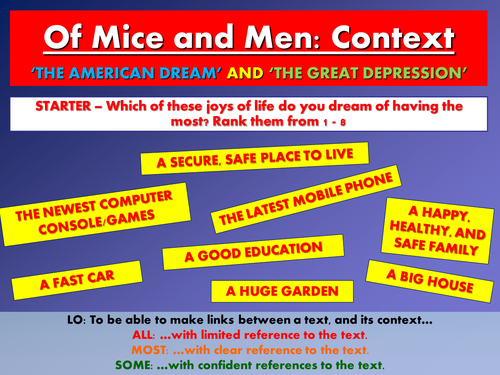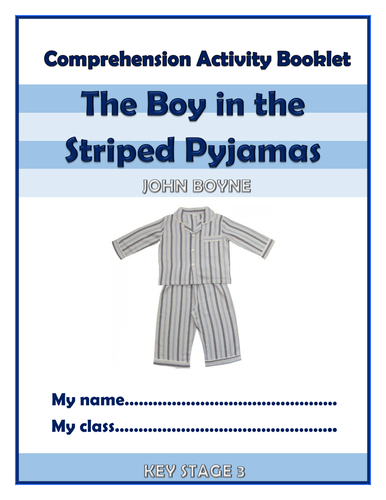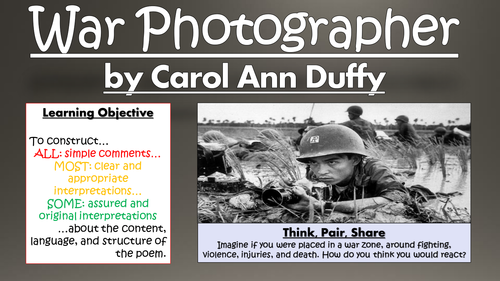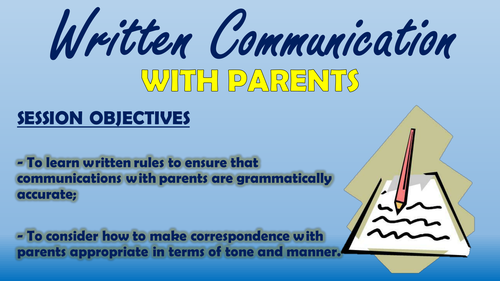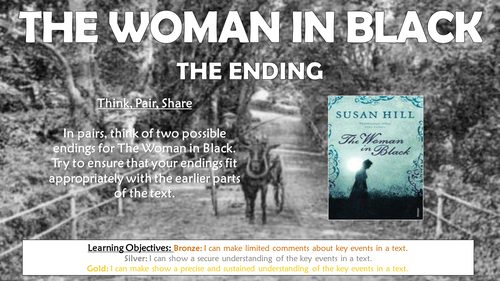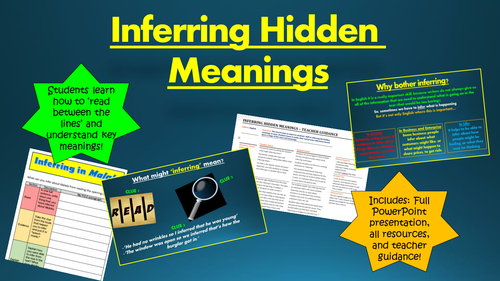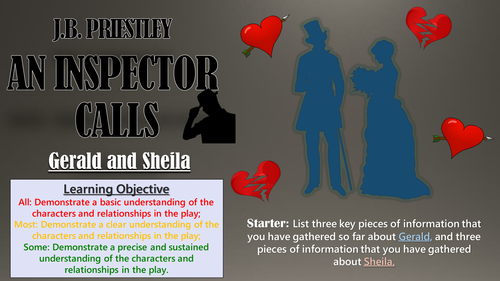
3k+Uploads
1890k+Views
2228k+Downloads
New teachers

Ozymandias - Percy Bysshe Shelley
This engaging, comprehensive lesson provides an interesting and highly-informative study of Percy Bysshe Shelley's power and conflict poem: 'Ozymandias.' Throughout the lesson, students gain a detailed understanding of the poem, with a particular focus upon the content, language, and structural features employed by Shelley. By the end of the lesson, students demonstrate their knowledge of the text analytically, through assured, appropriate, and sustained interpretations.
The lesson follows a step-by-step learning journey, in which children learn through:
- Defining the key concept of power, and considering its role and implications in man's actions;
- Securing contextual understanding of both Ozymandias the ruler, and Percy Bysshe Shelley the poet;
- Reading and interpreting the poem, using a provided line-by-line analysis, and interactive group activities;
- Developing their understanding through inferring and analysing key language and structural choices;
- Analysing how the theme of power is explored through Shelley's content, language, and structure;
- Peer assessing each other's learning attempts.
Included is:
- Whole lesson PowerPoint - colourful and substantial; (including hyperlinks to informative and engaging videos)
- Copy of poem;
- Content, language and structure mind map;
- Deeper thinking worksheet;
- Analysis template with success criteria for creating well-structured responses;
- Comprehensive lesson plan.
There are also opportunities for group learning, peer assessment, and whole class discussion. This was originally taught to middle-ability year 9/10 groups, but can easily be differentiated for groups of different ages and abilities.
All images are licensed for commercial use, and image rights are listed on the last page of the presentation.

Year 6 Guided Reading Comprehension Activities Booklet! (Aligned with the New Curriculum)
Now with PDF version included! This resource booklet contains a wide range of age-appropriate, engaging, and meaningful comprehension activities for use in guided reading sessions. They are perfect for aiding the progress of children towards meeting the Year 6 expectations within the new National Curriculum framework. Children love learning from these resources, whilst they are also of great use to teachers, as there is explicit information within each task regarding which comprehension strands the task is designed to demonstrate. They are also generic enough to ensure that they are appropriate for use with all texts.
Activities and games within the booklet include:
- Texts from other Cultures - to enable students to demonstrate that they can: 'Increase their familiarity with a wide range of books, including from our literary heritage, and books from other cultures and traditions.'
- Court Case: Defending a Text, and Room 101 - to enable students to demonstrate that they can: 'Provide reasoned justifications for your views, Explain and discuss and understanding of what has been read, including through presentations and debates, maintaining a focus on topic.'
- Stress Graph - to enable students to demonstrate that they can: 'Understand what you read by drawing comparisons within and between books.'
Plus many more activities (the booklet is over 20 pages in length!)
All images are licensed for commercial use, and are cited on a separate document (included.)
Bundle Sale

Travel Writing Lesson Bundle!
These engaging and detailed resources have been designed to make the teaching and learning of Travel Writing exciting, interesting, and easily accessible for all children. Throughout each lesson, students consider a different element of their writing (content, language, and structure) in order to produce imaginative and appropriate travel writing texts. Each lesson contains a comprehensive whole lesson PowerPoint, all the resources that you will need, and a lesson plan.
Included are the following lessons:
1. Travel Writing: Crafting Imaginative Content
2. Travel Writing: Constructing Imaginative Language;
3. Travel Writing: Creating Imaginative Structures
All images are licensed for commercial use, and are cited on the final slide of the PowerPoint/ the bottom of worksheets.
Bundle Sale

Macbeth: Lesson Bundle! (All Lessons, Plans, Resources, Everything!)
This engaging, varied, and informative scheme of learning is designed to help students gain understanding, assessment skills, and key interpretations of William Shakespeare's tragedy 'Macbeth.' Made up of a wide-range of interesting and exciting lessons, students should complete this scheme having gathered vital skills in: interpreting the significant meanings of the text, understanding the writer's ideas within the text, identifying the traits of key characters, settings, and themes, understanding dramatic and language devices, and relating the text to its social and historical context.
Stimulating, visual, and easily adaptable, these lessons provide suggested learning objectives and outcomes for students of a wide-range of abilities - The vast majority of tasks are differentiated to allow for different abilities and needs in your classroom. Each lesson loosely follows this logical learning journey to ensure that students learn in bite-size steps:
- Engaging
- Defining/ Understanding
- Identifying/Remembering
- Analysing/ Creating
- Peer or self evaluating.
All of the lessons are interactive, employ a variety of different teaching and learning methods and styles, and are visually-engaging. Resources, worksheets, and lesson plans are all provided, in addition to a fun Pointless game!

Of Mice and Men - Context: The American Dream and The Great Depression
This engaging and interesting lesson aims to improve students' knowledge of the social, historical, and cultural context of John Steinbeck's Of Mice and Men. It also aims to build their skills in creating clear and specific links between the text and it's context, focusing on a specific extract from the novel.
The lesson uses a range of tasks, that require students to use their visual and interactive skills. It follows this learning journey:
- Understanding what dreams are and how they differ for each of us;
- Defining the American Dream, The Wall Street Crash and The Great Depression;
- Creating a timeline which visually depicts the other influential events of the time;
- Reading and reflecting on an extract from the text;
- Analysing the links between texts and contexts, from a success criteria;
- Evaluating each others' analytical attempts.
All images in this resource are licensed for commercial use, and are cited on the final slide of the lesson presentation.
You can choose to buy this resource alone, or as part of the 'Of Mice and Men - All Lessons and Scheme' bundle, which contains seven full lessons, resources, teachers notes, and PowerPoint presentations, plus a Pointless Of Mice and Men game, for just £5!

The Boy in the Striped Pyjamas - KS3 Comprehension Activities Booklet!
This resource booklet contains a wide range of age-appropriate, engaging, and meaningful comprehension activities for use throughout the reading of John Boyne's 'The Boy in the Striped Pyjamas.' Teachers have found them particularly useful in comprehension or guided reading sessions. They are perfect for aiding the progress of children towards meeting the KS3 expectations within the new National Curriculum framework. Children have found these resources extremely engaging, and for teachers there is explicit information within each task regarding which comprehension strands the task is designed to demonstrate. They also relate to key extracts, characters, and themes from the story, ensuring that children gain a deep understanding of the text.
Activities within the booklet include:
- 'Context: The Holocaust' - to enable students to demonstrate that they can: 'Know the purpose, audience and context of the writing and drawing on this knowledge to support comprehension.'
- 'Boyne's Description - The Ending' - to enable students to demonstrate that they can: 'Know how language, including figurative language, vocabulary choice, grammar, text structure and organisational features, present meaning.'
- 'Bruno's Father' and 'Shmuel' - to enable students to demonstrate that they can: 'Study setting, plot, and characterisation, and the effects of these.'
- 'Vocabulary Inspector' - to enable students to demonstrate that they can: 'Learn new vocabulary, relating it explicitly to known vocabulary and understanding it with the help of context and dictionaries.'
Plus many, many more activities (the booklet is 21 pages in length!) I've also added it as a PDF in case the formatting differs on your computer.
All images are licensed for commercial use, and are cited on a separate document (included).

War Photographer - Carol Ann Duffy
This engaging, comprehensive lesson aims to improve students’ understanding of Carol Ann Duffy’s contemporary war poem ‘War Photographer’ with particular focus upon the language and structure used within the poem to depict the photographer’s experiences. By the end of the lesson, students demonstrate their knowledge of the text analytically, through assured, appropriate, and sustained interpretations.
The lesson follows a step-by-step learning journey, in which children learn through:
- Defining the role of the war photographer, and understanding difficulties in their job;
- Securing contextual understanding of Carol Ann Duffy - the poet;
- Reading and interpreting the poem, using a provided line-by-line analysis, and interactive group activities;
- Developing their understanding through inferring and analysing key language and structural choices;
- Understanding how the war photographer's life varies between war-torn locations and 'Rural England;'
- Analysing how language and structure are used to portray the photographer' experiences;
- Peer assessing each other's learning attempts.
Included is:
- Whole lesson PowerPoint - colourful and substantial; (including hyperlinks to informative and engaging videos)
- Copy of poem;
- Deeper thinking worksheet (including a scaffolded version, and a teacher answer sheet);
- Analysis template with success criteria for creating well-structured responses;
- Comprehensive lesson plan.
There are also opportunities for group learning, peer assessment, and whole class discussion. This was originally taught to middle-ability year 9/10 groups, but can easily be differentiated for groups of different ages and abilities.
All images are licensed for commercial use, and image rights are listed on the last page of the presentation.
Bundle Sale

Lord of the Flies Huge Bundle!
This bundle contains all of the Lord of the Flies lessons, the comprehension activities booklet, the knowledge organiser and the Pointless game!
These engaging, varied, and informative lessons have been designed to help students gain a valuable understanding of the plot, characters, language, and key messages in William Golding’s novel ‘Lord of the Flies.’ The lessons enable students to gain a comprehensive understanding of the key features of content, language, and structure, in addition to considering Golding’s key intentions in writing the novel.
All of the resources that you need to teach are included in the bundle: Whole lesson step-by-step PowerPoint presentations, informative and engaging , worksheets, activities, and lesson plans.
Contained in the bundle are lessons based on:
- 1. Savagery vs Civilization;
- 2. Ralph, Jack, and Piggy;
- 3. Golding’s Language Devices;
- 4. The Beast
- 5. Simon and Roger
- 6. The Ending
Plus the 30-page comprehension booklet, the knowledge organiser and the Lord of the Flies Pointless Game!
Stimulating, visual, and easily adaptable, these lessons provide suggested learning objectives and outcomes for students of a wide-range of abilities - The vast majority of tasks are differentiated to allow for different abilities and needs in your classroom. Each lesson loosely follows this logical learning journey to ensure that students learn in bite-size steps:
- Engaging
- Defining/ Understanding
- Identifying/Remembering
- Analysing/ Creating
- Peer or self evaluating.
All of the lessons are interactive, employ a variety of different teaching and learning methods and styles, and are visually-engaging.
Bundle Sale

Much Ado About Nothing Big Bundle! (All Lessons, Resources, Plans, Everything!)
THIS BUNDLE CONTAINS ALL OF THE ‘MUCH ADO ABOUT NOTHING’ LESSONS, PLUS THE COMPREHENSION BOOKLETS (for both KS3 and KS4) AND THE POINTLESS GAME!
This engaging, varied, and informative scheme of learning is designed to help students gain understanding, assessment skills, and key interpretations of William Shakespeare’s tragedy ‘Much Ado About Nothing.’ Made up of a wide-range of interesting and exciting lessons, students should complete this scheme having gathered vital skills in: interpreting the significant meanings of the text, understanding the writer’s ideas within the text, identifying the traits of key characters, settings, and themes, understanding dramatic and language devices, and relating the text to its social and historical context.
Stimulating, visual, and easily adaptable, these lessons provide suggested learning objectives and outcomes for students of a wide-range of abilities - The vast majority of tasks are differentiated to allow for different abilities and needs in your classroom. Each lesson loosely follows this logical learning journey to ensure that students learn in bite-size steps:
- Engaging
- Defining/ Understanding
- Identifying/Remembering
- Analysing/ Creating
- Peer or self evaluating.
All of the lessons are interactive, employ a variety of different teaching and learning methods and styles, and are visually-engaging. Resources, worksheets, and lesson plans are all provided. There is a 20 page comprehension booklet, and also a fun ‘Pointless’ Game included, to enhance your students’ knowledge of the text!

Dr Jekyll and Mr Hyde: Description of Mr Hyde!
This engaging and informative lesson enables students to make sustained and insightful interpretations of Stevenson’s language when describing Mr Hyde throughout the novella ‘Strange Case of Dr Jekyll and Mr Hyde.’ In particular, students analyse how the use of similes, varied verbs, and repetition, contribute to the portrayal of devilish man deprived of a social or moral conscience.
The lesson follows a step-by-step learning journey, in which children learn through:
- Understanding key information about 19th Century morality, and learning how the character of Hyde becomes separated from these ideals;
- Reading and comprehending key extracts describing Hyde in the text;
- Exemplifying and analysing Stevenson's use of language devices across his description;
- Describing their own immoral/hideous character utilising the same descriptive techniques;
- Peer assessing each other's learning attempts.
Included is:
- Whole lesson PowerPoint - colourful and comprehensive;
- Selected extracts from the text describing Hyde;
- Stevenson's Language worksheet (and completed answer sheet for teachers);
- Analysis template with success criteria for creating well-structured responses;
- Links to further reading for advanced students (internet access needed for these);
- Comprehensive lesson plan.
There are also opportunities for group learning, peer assessment, and whole class discussion. These resources were originally taught to GCSE students, but with subtle adaptations they have also been used with KS3 and A Level Students.
All images are licensed for commercial use, and image rights are listed on the last page of the presentation.

Pride and Prejudice - Social and Historical Context!
This engaging and informative lesson enables students to gain a detailed insight into the social and historical context of Jane Austen’s 'Pride and Prejudice.' In particular, students learn about love, class, inheritance, and reputation in the Georgian and Regency eras – key themes throughout Austen’s novel. They then make clear and sustained links between the features of context and the text.
The lesson follows a step-by-step learning journey, in which students learn through:
- Playing a fun and interactive quiz about the life of Jane Austen;
- Completing carousel activities in groups to learn about the key features of love, class, inheritance, reputation, and royalty in the Georgian/ Regency eras;
- Linking their understanding of context to the key elements of the text;
- Analysing how Austen is influenced by key features of 19th Century life in 'Pride and Prejudice.'
- Peer assessing each other's learning attempts.
Included is:
- Whole lesson PowerPoint - colourful and comprehensive;
- All resources for the carousel activities, including sheets needed for 'Love and Courtship Blind Date', 'Social Class Detectives', and 'Georgian and Regency Royalty.'
- Analysis template with success criteria for creating well-structured responses;
- Comprehensive lesson plan.
There are also opportunities for group learning, peer assessment, and whole class discussion. These resources were originally taught to GCSE students, but with subtle adaptations they have also been used with both younger and older (up to A Level) students.
Please note that one of the introduction activities requires internet access.
All images are licensed for commercial use, and image rights are listed on the last page of the presentation.
Bundle Sale

Magazine Project Bundle!
This lesson and resource bundle provides all that is needed to aid students in composing their own short magazines, on a subject/genre of their choice. Everything that is needed to teach the project is provided, including engaging lesson powerpoints, worksheets, model examples, and activities, and also comprehensive lesson plans for each stage.
Each engaging and informative lesson aids students in learning about and then composing a different magazine page. Included are lessons on:
- Choosing the Genre and Audience and Composing a Front Cover
- Writing Agony Aunt/ Uncle Pages
- Writing Feature Articles
- Writing Reviews
Throughout each lesson, students learn through defining techniques, identifying ‘what a good one looks like’ and analysing model examples, before using writing help-sheets and success criteria to design their own.
All images are cited on the final slides of each PowerPoint.

An Inspector Calls: Priestley's Dramatic Devices
This interesting and engaging lesson enables students to build their understanding of the dramatic devices employed by J.B. Priestley throughout the play ‘An Inspector Calls.’ In particular, students learn how to make sustained, clear interpretations about the impact of the dramatic devices upon tone, plot, and meaning. They also contemplate how Priestley utilises dramatic devices to communicate his underlying messages about responsibility and social duty to his audience.
The lesson follows a clear, logical, bite-size learning journey, which guides students towards differentiated learning objectives. Over the course of this journey, they become able to:
- Define and understand key dramatic devices;
- Identify and discuss the dramatic devices that Priestley uses towards the end of Act One.;
- Read and interpret the end section of Act One in the play;
- Analyse how Priestley's use of dramatic devices is used effectively for impact;
-Peer/self-assess learning attempts.
This resource pack includes:
- A visually engaging, comprehensive whole-lesson PowerPoint presentation;
- The end of Act 1 extract of the text for students to read and interpret (with a pre-highlighted example for the identification task);
- Dramatic Devices information cards for the card-sorting game;
- A scaffolded template for the main analytical task, with a further completed model example.
- A detailed lesson plan, complete with what the teacher and students should aim to achieve at each stage of the lesson.
All images are licensed for commercial use, and are cited on the final slide of the PowerPoint.

Written Communication with Parents - CPD Session!
I delivered this CPD session to all members of our staff team who maintain regular contact with parents and other stakeholders, in a bid to improve the quality, accuracy, and clarity of our written communications. I'd recommend that the session takes about 1 hour to 1 hour 30 minutes to deliver.
We had received some negative feedback comments, regarding our communications, varying from examples of poor grammatical accuracy, to instances in which the tone of emails, letters, and other forms of correspondence were perceived as rude. It is surprising how common this is across schools, and how little training is provided on these forms of interaction. Following this training, we are receiving far fewer complaints, and many staff members now keep the help-sheets pinned up by the desks to refer to when communicating with parents.
Participants learn through:
- Participating in a fun pub-style quiz to eradicate common spelling, punctuation, and grammar misconceptions and errors;
- Considering the role of parents, their needs and interests, and what they expect from their child's school, as a means to understand why schools sometimes receive difficult communications;
- Reading and analysing examples of poor written correspondence, considering how both the tone and the accuracy can be improved;
- Exploring different language strategies to create a personal, polite tone within emails, by considering the connotations of different words;
- Taking away help sheets that can be referred to whenever written communications are being drafted.
The resource pack includes:
- Colourful and engaging whole-session PowerPoint presentation ;
- Examples of written communications for participants to analyse;
- Quiz answer sheet;
- Accurate Written Communication help-sheet;
- Polite Written Communication help-sheet.
All images are licensed for commercial use, and are cited on the final slide.
(Please note that the only section of the PowerPoint that you may wish to modify is with regards to the distinct features of parents at your own school - Aside from this, the resources are good to go!)

An Inspector Calls: The Context of the Play
These interesting and engaging resources enable students to build their understanding of the context of J.B. Priestley’s play ‘An Inspector Calls.’ In particular, students learn how to make clear and appropriate links between the social and historical context and the play itself. This gives students a really stable knowledge-base from which to make inferences and interpretations about other parts of the play.
The lesson follows a clear, logical, bite-size learning journey, which guides students towards differentiated learning objectives. Over the course of this journey, they become able to:
- Recall the main events that occurred between 1912 and 1945, through an interactive group activity;
- Remember some key information about J.B Priestley and his beliefs;
- Read and understand the opening of the play;
- Make links between the opening of the play and the historical context - both in term of when the play was set, and when it was written;
- Analyse how Priestley links historical context to his characters, in order to get his messages across to the audience;
-Peer/self-assess learning attempts.
This resource pack includes:
- A visually engaging whole-lesson PowerPoint presentation;
- A clear and interesting worksheet for the development task;
- The opening of the text for students to read and interpret;
- Context information cards for the card-sorting game;
- A detailed lesson plan, complete with what the teacher and students should aim to achieve at each stage of the lesson.
All images are licensed for commercial use, and are cited on the final slide of the PowerPoint.

Elizabeth I Knowledge Organiser!
This clear, detailed and visually-appealing resource offers a complete reference point for children learning about Elizabeth I as a part of their history study of ‘Significant Individuals.’ It contains comprehensive sections entitled:
Overview;
Times in Her Life;
Important Vocabulary;
Elizabeth I Timeline;
Answers to the Important Questions;
Top Ten Facts.
The resource is designed to be printed onto A3, and is provided as both a PDF and a Word version (so that you can edit if you want to). All images used are licensed for commercial use.

The Woman in Black: The Ending!
This engaging and informative lesson enables students to make precise and sustained interpretations regarding the portrayal of Arthur Kipps throughout Susan Hill’s The Woman in Black. In particular, students consider how Kipps is initially presented, and how his character is developed throughout the text.
The lesson follows a step-by-step learning journey, in which children learn through:
- Recapping the events leading up to the ending;
- Discussing what a suitable ending to this story may entail;
- Understanding and comprehending the key events of the ending of the story;
- Considering how these events help to reveal key information about Arthur and the ghost;
- Analysing how effective Hill's ending is at providing the closure that the reader needs;
- Peer assessing each other's learning attempts.
Included is:
- Whole lesson PowerPoint - colourful and comprehensive;
- Selected extract from 'The Woman in Black' (the ending);
- Cards for sorting activity;
- Analysis template with success criteria for creating well-structured responses;
- Comprehensive lesson plan.
There are also opportunities for group learning, peer assessment, and whole class discussion. This was originally taught to mixed ability year 10 groups, but can easily be differentiated for groups of different ages and abilities.
All images are licensed for commercial use, and image rights are listed on the last page of the presentation.

Out of the Blue - Simon Armitage - 9/11 Poem
These informative and engaging resources enable students to build the skills needed to interpret and analyse the langauge used in poems. These resources also give students a strong foundation knowledge, including the SMSC implications, of the events of 9/11 - an important historical day that should never be forgotten.
Students learn through the following tasks:
- Collecting and discussing knowledge of the events of the day through an interactive starter task;
- Reading the poem 'Out of the Blue' and identifying the descriptive devices throughout the poem;
- Discussing a model analytical paragraph about the language used in the poem, in order to form their own success criteria;
- Using a template to form their own analytical paragraphs about the language used in the poem;
- Using peer or self-assessment in order to establish their success at analysing language.
The following resources are provided:
- Engaging and colourful step-by-step PowerPoint
- Poem
- Teacher lesson guidance;
- Identifying worksheet;
- Analysis template;
- Writing to analyse help-sheet
- Analysis model
All images are licensed for commercial use, and are cited on the final slide of the PowerPoint.

Inferring the Hidden Meanings in Texts
This lesson enables students to 'read between the lines' in texts and infer significant meanings. Utilising a range of visual, kinaesthetic, and reading tasks, students not only gain an increased understanding of the importance of inference in English, but also gain an awareness of its importance in other areas of life.
The lesson follows an interesting and engaging step-by-step learning journey, which helps students to:
- Define what inference is;
- Understand the importance of inference;
- Infer what they can see;
- Infer what they hear;
- Infer what they read, using key sentence starters and textual evidence;
- Formulate P.E.E. inference responses, where necessary utilising the included scaffolds and help-sheets;
- Peer/self assess their learning attempts.
Included in this resource pack:
- Full whole-lesson PowerPoint presentation;
- P.E.E scaffold sheet;
-Writing to analyse helpsheet;
- Pictures required for development task;
- Teacher guidance
All images are licensed for commercial use, and are cited on the final slide.

An Inspector Calls: Gerald and Sheila
This interesting and engaging lesson enables students to build their understanding of the relationship between Gerald and Sheila, two of the main characters in ‘An Inspector Calls.’ In particular, students learn about about how both characters contribute to the downfall of Eva Smith, and how their relationship is affected as details of their actions emerge.
The lesson follows a clear, logical, bite-size learning journey, which guides students towards differentiated learning objectives. Over the course of this journey, they become able to:
- Recall and understand the key features of Gerald and Sheila's character profiles;
- Link Gerald and Sheila to the historical context of the play;
- Read and understand the section of the play in which Gerald is interviewed by the inspector;
- Analyse the effect of Gerald's revelations on the relationship of Gerald and Sheila;
- Create a diary-entry piece in which they consider Gerald's character and relationships with both Sheila and Daisy Renton;
-Peer/self-assess learning attempts.
This resource pack includes:
- A visually engaging whole-lesson PowerPoint presentation;
- A clear and interesting worksheet for the development task (with answer sheet);
- An extract from Act 2 of the play for students to read and interpret;
- Guidance for completing diary entries;
- A detailed lesson plan, complete with what the teacher and students should aim to achieve at each stage of the lesson.
All images are licensed for commercial use, and are cited on the final slide of the PowerPoint.





